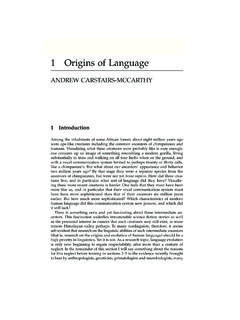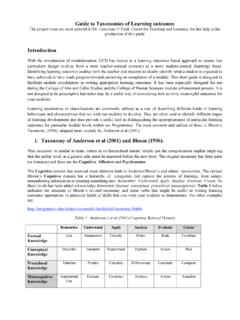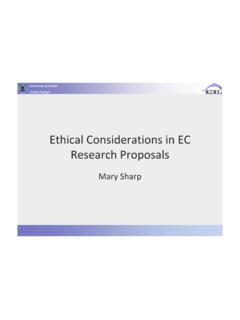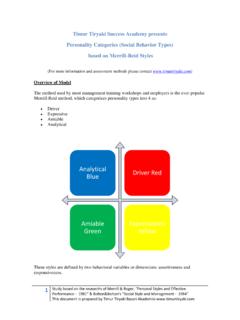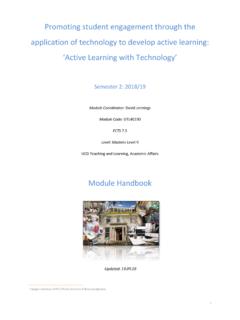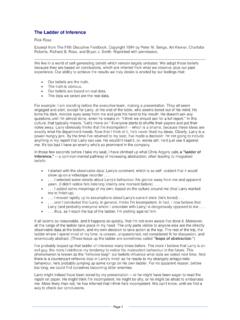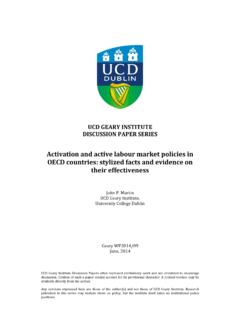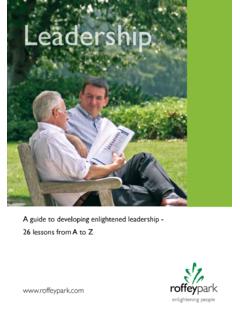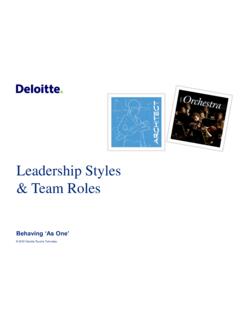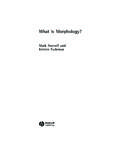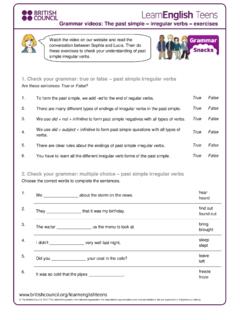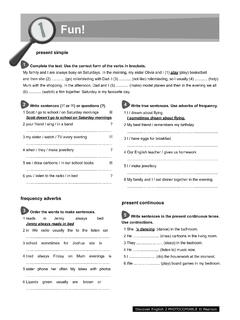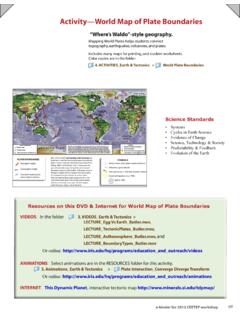Transcription of Reflective Practice Models
1 1 GUIDE Reflective Practice Models What is Reflective Practice ? In Reflective Practice , practitioners engage in a continuous cycle of self-observation and self-evaluation in order to understand their own actions and the reactions they prompt in themselves and in learners (Brookfield, 1995; Thiel, 1999). The goal is not necessarily to address a specific problem or question defined at the outset, as in practitioner research, but to observe and refine Practice in general on an ongoing basis (Cunningham, 2001) Models for Reflection There are many different forms of reflection. Sch n (1991) identified two types that are particularly relevant in the development of teaching Practice : In both instances, you will build on previous learning, linking it to current and future Practice . In other words, you will take a step back from your teaching, evaluate it, and extract meaning from it in order to make positive change. In linking teaching and reflecting to learn more about how we teach and the impact it has on student learning, some practical Models of Reflective Practice have been developed.
2 The commonalities between these Models are that they each encompass Sch n s concept of Reflection-on-Action . 2 Kolb s Model of Experiential Learning (1984) This four-stage model supports you in reflecting on and drawing conclusions from a hands-on experience that you have while teaching. It also promotes planning to do something different and testing it out. It combines everyday experience with evidence-based educational research. First, you will have a Concrete Experience. This will be an incident or event that occurs during your teaching, an experience that you have that has caused you to pause for reflection. This experience can be either something unexpected that has occurred while you were teaching, or something new that you have decided to test out. Your Reflective Observation will be your initial reflection following the experience. Useful questions you can ask yourself here are: What was I trying to do?
3 What did I do? Why did I do it? During the Abstract Conceptualisation stage, you will explore your initial reflections in greater depth in making sense of what happened. You will do this by connecting the actions that you have taken with the knowledge you already have to draw conclusions and make decisions on whether a change is required. This stage will be supplemented by evidence from research literature and/or the support of colleagues. 3 Finally, you can plan for and put into Practice , or Actively Experiment with new ideas and strategies, underpinned by the new knowledge you have gained about your teaching. Gibbs s Reflective Cycle (1998) In advancing Kolb s model, Gibbs s Reflective cycle is more comprehensive, providing prompt questions throughout the process. Whilst you will still reflect on an incident or event that has occurred, draw conclusions from it, and make an action plan for what you will do differently in the future, this approach also promotes personal reflection on how you felt about what happened, and what was good or bad about the experience of it.
4 In the Description stage, you will describe in detail what happened during the event. Some questions you can ask yourself here are: Where was I at the time? What was I doing? Who else was there and what were they doing? What happened? What was my part in this? What was the result? Next, you will recall and explore your thoughts and Feelings at the time: 4 How were you feeling when the even started? What were you thinking about at the time? How did it make you feel? How did other people make you feel? How did you feel about the outcome of the event? What do you think about it now? Objectively considering what you feel went well or not so well during the Evaluation stage give you the opportunity to reflect on areas that you need to address. This stage works most effectively when you consider not only your students learning but also your own. In Analysing the new information you have gleaned from the process thus far, you will dig deeper into the event to make sense of it, supporting this with research from the literature.
5 Prompts here include: What went well? What did I do well? What did others do well? What did not go well, or turn out as I had planned? What did I or others contribute to this outcome? Now that you have explored your experience and drawn meaning from it supported with scholarly evidence, you can use this information to draw Conclusions about what it is that you need to do to improve and how you might achieve this. In the final stage, you will draw up an Action Plan of how you intend to make changes to your Practice . In previously asking yourself what is was that you did, you can now ask: What will I do differently and how? 5 Rolfe, Freshwater, & Jasper What Model (2001) Rolfe, Freshwater, & Jasper (2001) propose the What model, an iterative process consisting of three simple questions, but which require comprehensive Reflective answers: 6 Selected Bibliography Biggs, J.
6 & Tang, C. (2007). Teaching for quality learning. Berkshire: SRHE & Open University Press Boyd, E. & Fales, A. (1983). Learning: the key to learning from experience. Journal of Humanistic Psychology,23(2),99-117 Brockbank, A. & McGill, I. (2000). The requirements for reflection. In A. Brockbank and I. McGill (Eds.), Facilitating Reflective Learning in Higher Education, pp56-69, UK: SHRE. Brockbank, McGill, I. (2007).Facilitating Reflective Learning in Higher Education(2nd Ed.), Berkshire: Open University Press. Bulman, C., &Schutz, S. (2004). Reflective Practice in nursing (3rd ed.). Oxford: Blackwell. Donohoe, A., McMahon, T. & O Neill , G (2008) Online Communities of Inquiry in Higher Education, In, R. Donnelly & F. McSweeney (Eds)Applied e-learning and e-teaching in higher education, pp262-288. London: Information Science Reference. Epstein, R. M, &Hundert, E. M. (2002). Defining and assessing professional competence.
7 JAMA, 287(2), 226 35. Eraut, M. (1998). Concepts of competence. Journal of Interprofessional Care, 12(2), 127-139. Eraut, M. (2002).Developing professional knowledge and competence. London: RoutledgeFamer Gibbs, G. (1998). Learning by Doing: A Guide to Teaching and Learning. London:Further Educational Unit Gransden, B. (2004). Reflections on teaching observations and the use of a personal development journal in medical teacher Action Research, 12(1), 19-32 &Smith, D. (1995) Reflection in Teacher Education-towards definition and and Teacher Education, 11, (1) 33-49. Johns, C. (2000). Becoming a Reflective practitioner. Oxford: Blackwell Science Kolb, D. (1984) Experiential learning. New Jersey: Prentice Hall Maughan, C., & Webb, J. (2001). Small group learning and assessment. Retrieved August 01, 2007, from theHigher Education Academy Web site: McDonough, R. (2004).The Reflective practitioner: The essence of work based learning?
8 Work Based Learning in Primary Care, 2(4),373-376. Plack, M. , L. (2005).The Reflective Practitioner: Reaching for Excellence in Practice , Pediatrics, 116(6), 1546-1552 Rolfe, G., Freshwater, D., & Jasper, M. (2001). Critical Reflection for Nursing and the Helping Professions: A user s guide. London: Palgrave Macmillan Sch n, (1991). The Reflective Practitioner: how professionals think in action. London: Temple
